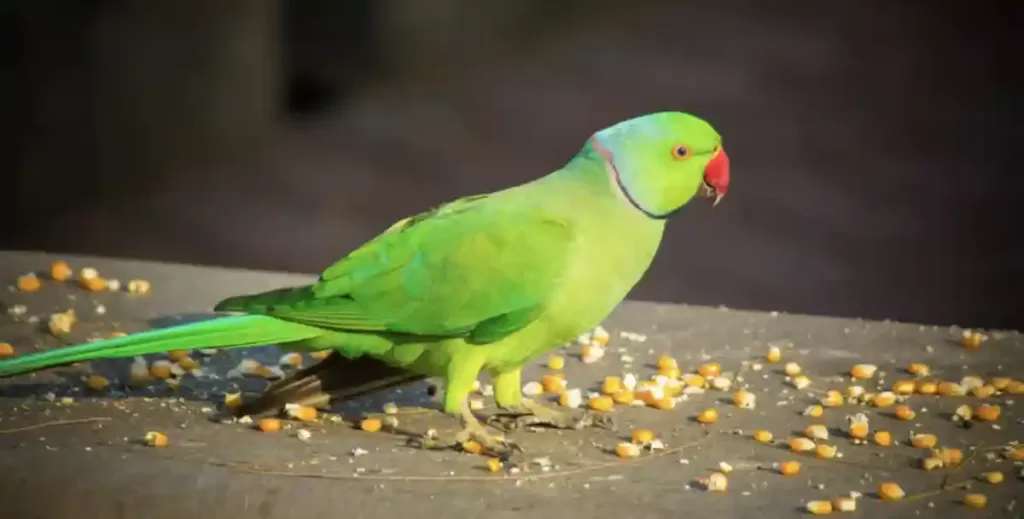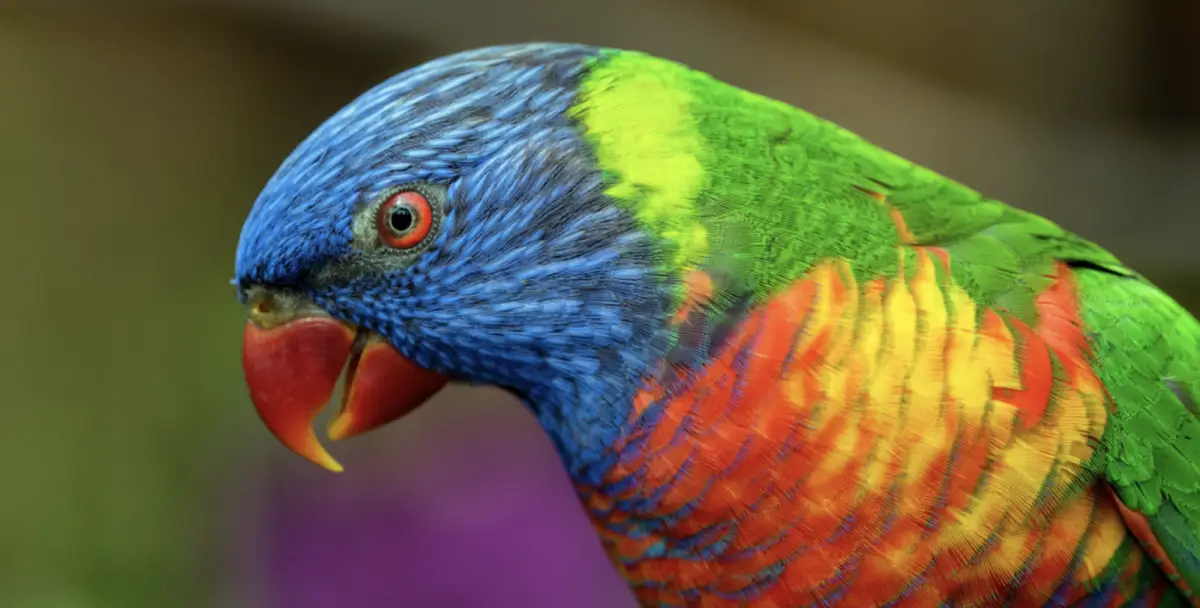Not all parrots are parakeets, but all 100-plus species of parakeets are a type of parrot.
We’ve all heard stories of people leaving money in their will because their parrot might live on for another forty years. But does that include parakeets? How long do parakeets live?
How long a parakeet lives depends on the breed. A budgerigar parakeet’s lifespan is about 5-10 years. Where a monk parakeet will probably live for 15-20years. The plain parakeet averages a 15-year lifespan. Mustache parakeet’s longevity heavily depends on their diet but averages 20-25 years.
Breed matters when it comes to a parakeet’s potential lifespan. But so does its care, from what it is fed, the size of its cadge, and if it has plenty of company (bird or human). There are also ways to help determine your feathered friend’s age.
15 Parakeet Breeds’ Lifespans – Life Expectancy of Parakeets
While there are over a hundred different parakeet species, only a fraction of them are commonly known, and even fewer are kept as pets. Thus, we’ve made a chart of the average lifespan of the more well-known parakeets and some of their popular parrot cousins.
| Bird Breed | Average Lifespan | General Breed Information |
| African Grey | 40-60 years 23 in the wild | One of the most intelligent parrots and one of the most common bird pets. While they average 40-60 years, it is not unheard of them living until over 80. They are high maintenance, require a lot of exercise, and need a lot of mental stimulation to prevent boredom due to their high intelligence. |
| Alexandrine Parakeet | 40 years | A medium-sized Asian breed, popular in Europe. It is affectionate, gentle, colorful, and bright. While they can begin talking as early as 8 months, most start after their first birthday. |
| Barred parakeet (Lineolate parakeet) | 10 years | Good diet plays a crucial role in determining this bird’s lifespan. Their lineage’s health is another key indicator, as some hereditary illnesses can crop up in this breed. |
| Bourke’s parakeet | 25 years | This gentle bird is from Australia. It is considered on the quiet side. |
| Budgerigar | 5-8 years | Quality of diet and exercise play a huge difference in this Australian bird’s health and lifespan. Adults average 7 inches (17.8 cm) in length and pick up words and phrases with ease. |
| Derbyan parakeet (Lord Derby’s parakeet) | 30 years | While considered a docile and affectionate breed, these birds do need lots of socialization. |
| Golden Parakeet (Golden conures) | 20-25 years 30 in the wild. | These bright yellow (gold) birds with green trim are a breed whose lifespans actually shrink when in captivity. These affectionate and intelligent birds are expensive, however, so not a common pet. |
| Grass parakeet | 10 years | These quiet and colorful birds are happiest in peaceful home environments. So maybe not great choice if you have toddlers. Some can talk a bit, but most twitter. |
| Green-cheeked parakeet | 30 years | Famous for their clown antics, these goofs love to hang upside-down and are playful. They are full of curiosity and quite cute. They are not big talkers and considered relatively quiet, as birds go. |
| Indian ringneck parakeet (Rose-ringed) | 35 years | Their friendliness and ability to speak make these birds a sought-out pet. They are considered pretty easy keepers and don’t require a ton of interaction. They are a fairly common breed in South-East Asia and sub-Saharan Africa. However, they are considered an invasive species in South Africa. So do check if it is legal to own one where you live before buying. |
| Monk Parakeet (Quaker parakeet/parrot) | 15 years 6-7 in the wild | Despite the name, these comedians are really a parrot. Adored for their affectionate and comical natures, these birds are capable of a wide vocabulary and incredibly clear speech. Please note they are not legal to own in some US states for agricultural reasons. Please check your local regulations before acquiring one as a pet. |
| Mustache parakeet | 25 years | This outgoing bird has a sweet temperament. However, the quality of diet, mental stimulation, and exercise has huge impact on this bird’s longevity. Sadly, the mustache parakeet is endangered. |
| Plain parakeet | 15 years | Small and mostly shades of green, these birds are adored for their sweet, friendly, and silly natures. While they average only 15 years, those given high-quality care can sometimes reach up to 20 years. |
| Plum-headed parakeet | 19 years | A social and affectionate bird that loves attention. It is not considered aggressive but will act up if it is not getting enough interaction. Not all will talk, but many do. |
| Regent Parakeet | 25 years | A pretty rare breed but considered incredibly affectionate. |
9 Signs a Parakeet is Unwell

Abnormal breathing
Changes in breathing with no apparent reason are a red flag.
Aggressiveness
Every bird has their own unique personality and temperament. But if your bird’s personality has suddenly become aggressive, or its aggressive tendencies have dramatically increased, it might be worth getting your little buddy checked out by a vet.
Daytime Sleeping
Birds are typically alert during the day and sleep at night. Sleeping during the day is a sign of poor health or something irritating it at night. A common culprit is mites, who love to make a nuisance of themselves at night, keeping your feathered friend awake.
Dehydration
Parakeets, like any bird, can’t sweat. Panting, hot beak, excessive wing flutters are signs of being too warm and dehydrated.
Discharge from beak or feathers
Just like people, eyes and noses should not be running.
Droppings
Parakeet pop is typically described as “burnt popcorn” or gravely “chalky white” look. Changes to their normal poop are signs something is off. Loose droppings are diarrhea, red is alarming, so please rush to the vet, and greenish poop is a sign of lack of eating.
Excessive Squawking
Obviously, parakeets squawk. But you know your bird, if it is squawking more than usual, something isn’t right. If there haven’t been any obvious environmental changes, a vet visit might be in order.
Hot Feet
Hot feet could be due to the fact it is a hot day since birds can’t sweat. Their feet can also warm up after lots of exercise. But if the feet are hot, look for other signs of illness and keep an eye on your friend.
Weight loss
Unless your parakeet is grieving, this is a sign of illness. However, even if the bird is grieving, a vet might be a wise precaution.
10 Foods to Never Feed a Parakeet

Even if you know not to feed your parakeet certain foods, the bird might steal a bite when out of its cage.
So here is a list of foods they should never eat and if they are toxic (vet trip) or simply unhealthy and best avoided.
- Apple Seeds (toxic)
- Avocado (toxic)
- Caffeine (toxic)
- Chocolate (toxic)
- Dairy (unhealthy)
- Fruit pits (toxic)
- Garlic (toxic)
- Mushrooms (unhealthy)
- Onion (toxic)
- Tomatoes (unhealthy)
How Old Is My Parakeet?
If the bird is less than 3-4 months, it will still have stripes on its head. Once it has its first molt, these stripes will be replaced by a full head of feathers.
Parakeets with dark black eyes is a maximum of five months old. Their eyes will lighten to grey around the 4-8 month mark.
The easiest way to tell the age of a parakeet is by getting the info off its leg band. If it has writing, this can be used to find out the bird’s age. A helpful guide to interpreting the band is here.


